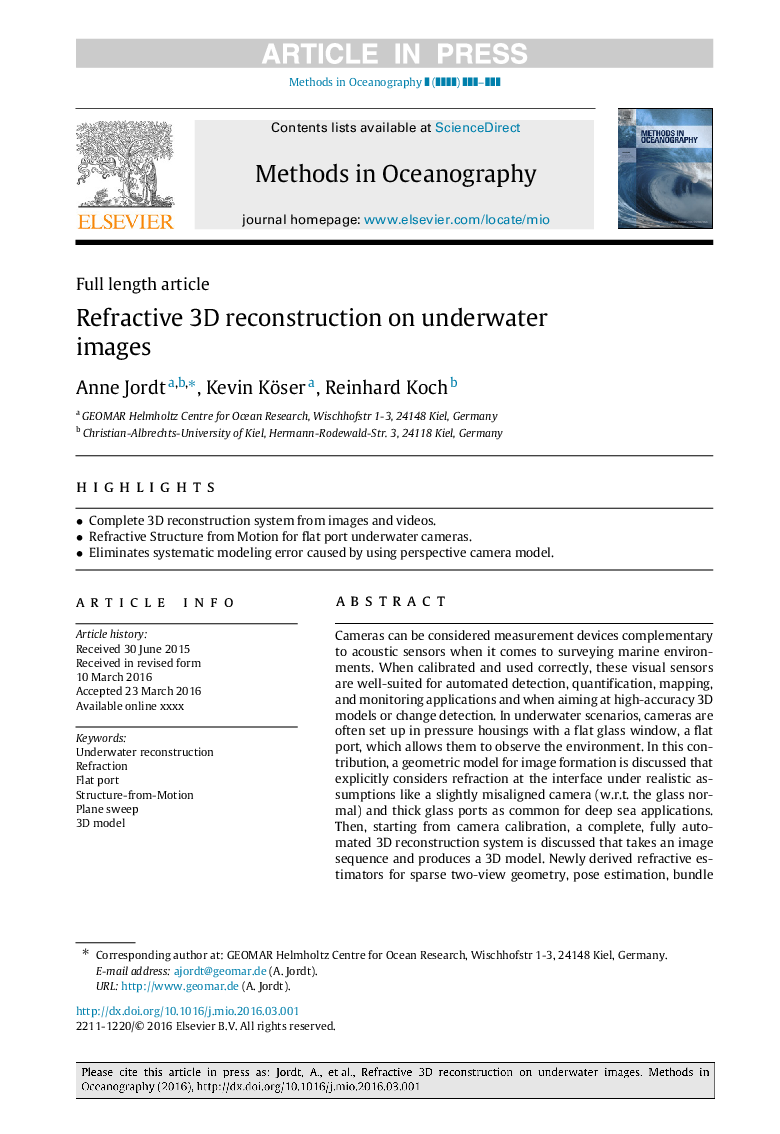| Article ID | Journal | Published Year | Pages | File Type |
|---|---|---|---|---|
| 8060433 | Methods in Oceanography | 2016 | 24 Pages |
Abstract
Cameras can be considered measurement devices complementary to acoustic sensors when it comes to surveying marine environments. When calibrated and used correctly, these visual sensors are well-suited for automated detection, quantification, mapping, and monitoring applications and when aiming at high-accuracy 3D models or change detection. In underwater scenarios, cameras are often set up in pressure housings with a flat glass window, a flat port, which allows them to observe the environment. In this contribution, a geometric model for image formation is discussed that explicitly considers refraction at the interface under realistic assumptions like a slightly misaligned camera (w.r.t. the glass normal) and thick glass ports as common for deep sea applications. Then, starting from camera calibration, a complete, fully automated 3D reconstruction system is discussed that takes an image sequence and produces a 3D model. Newly derived refractive estimators for sparse two-view geometry, pose estimation, bundle adjustment, and dense depth estimation are discussed and evaluated in detail.
Related Topics
Physical Sciences and Engineering
Earth and Planetary Sciences
Oceanography
Authors
Anne Jordt, Kevin Köser, Reinhard Koch,
